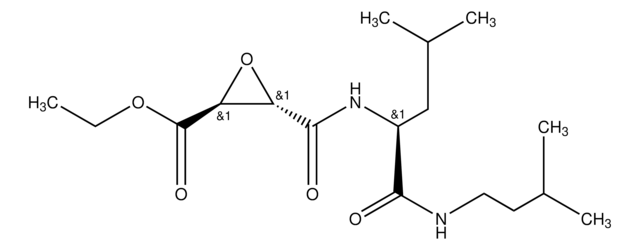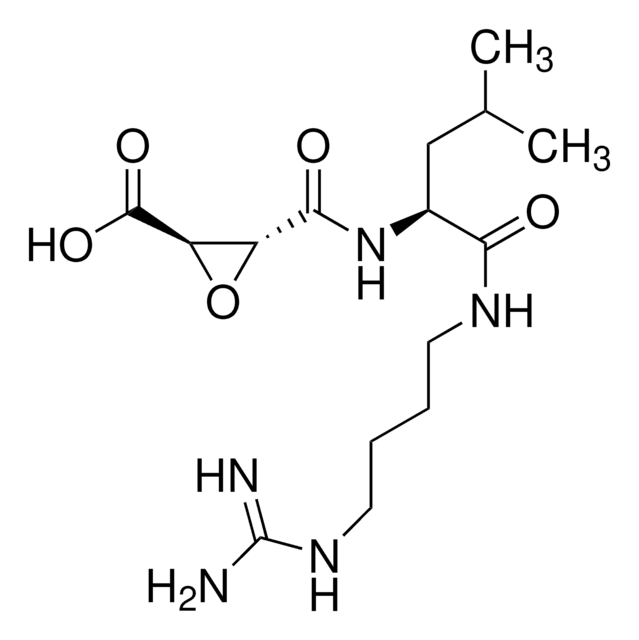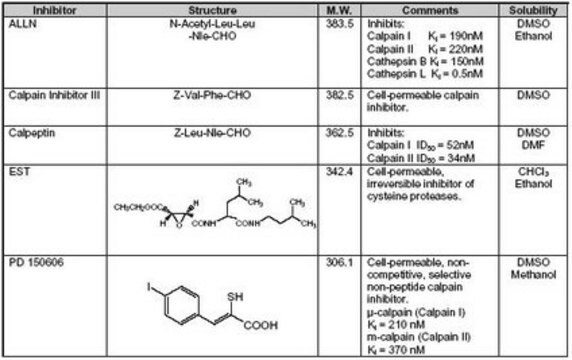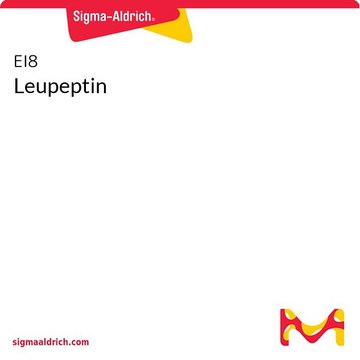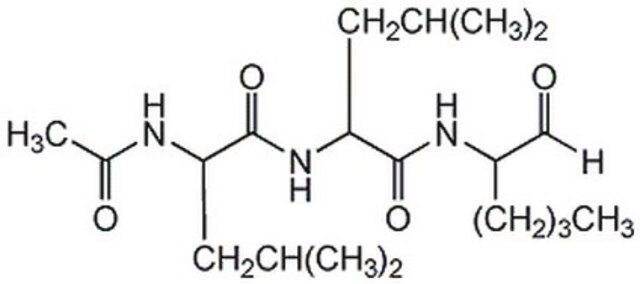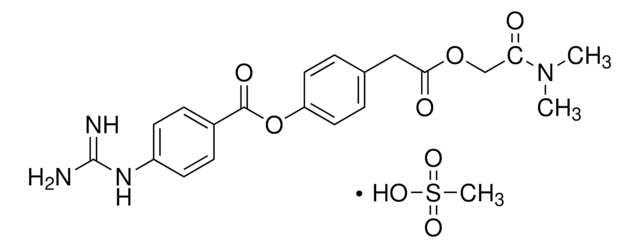330005
EST
A cell-permeable, irreversible inhibitor of cysteine proteases.
Sinonimo/i:
EST, Loxistatin, (2S,3S)- trans-Epoxysuccinyl-L-leucylamido-3-methylbutane Ethyl Ester, E-64d, Loxistatin, (2S,3S)-trans-Epoxysuccinyl-L-leucylamido-3-methylbutane Ethyl Ester, E-64d
About This Item
Prodotti consigliati
Livello qualitativo
Descrizione
RTECS - RR0404300
Saggio
≥97% (HPLC)
Stato
solid
Produttore/marchio commerciale
Calbiochem®
Condizioni di stoccaggio
OK to freeze
Colore
white
Solubilità
DMSO: soluble
Condizioni di spedizione
ambient
Temperatura di conservazione
−20°C
Stringa SMILE
N([C@@H](CC(C)C)C(=O)NCCC(C)C)C(=O)[C@H]1O[C@@H]1C(=O)OCC
InChI
1S/C17H30N2O5/c1-6-23-17(22)14-13(24-14)16(21)19-12(9-11(4)5)15(20)18-8-7-10(2)3/h10-14H,6-9H2,1-5H3,(H,18,20)(H,19,21)/t12-,13-,14-/m0/s1
SRVFFFJZQVENJC-IHRRRGAJSA-N
Descrizione generale
Azioni biochim/fisiol
calpain-1
Attenzione
Ricostituzione
Altre note
Mehdi, S. 1991. Trends Biochem. Sci. 16, 150.
McGowan, E.B., et al. 1989. Biochem. Biophys. Res. Commun.158, 432.
Tamai, M., et al. 1987. J. Pharmacobiodyn.10, 678.
Komatsu, K., et al. 1986. Exp. Neurol. 91, 23.
Tamai, M., et al. 1986. J. Pharmacobiodyn. 9, 672.
Note legali
Codice della classe di stoccaggio
11 - Combustible Solids
Classe di pericolosità dell'acqua (WGK)
WGK 2
Punto d’infiammabilità (°F)
Not applicable
Punto d’infiammabilità (°C)
Not applicable
Certificati d'analisi (COA)
Cerca il Certificati d'analisi (COA) digitando il numero di lotto/batch corrispondente. I numeri di lotto o di batch sono stampati sull'etichetta dei prodotti dopo la parola ‘Lotto’ o ‘Batch’.
Possiedi già questo prodotto?
I documenti relativi ai prodotti acquistati recentemente sono disponibili nell’Archivio dei documenti.
I clienti hanno visto anche
Il team dei nostri ricercatori vanta grande esperienza in tutte le aree della ricerca quali Life Science, scienza dei materiali, sintesi chimica, cromatografia, discipline analitiche, ecc..
Contatta l'Assistenza Tecnica.